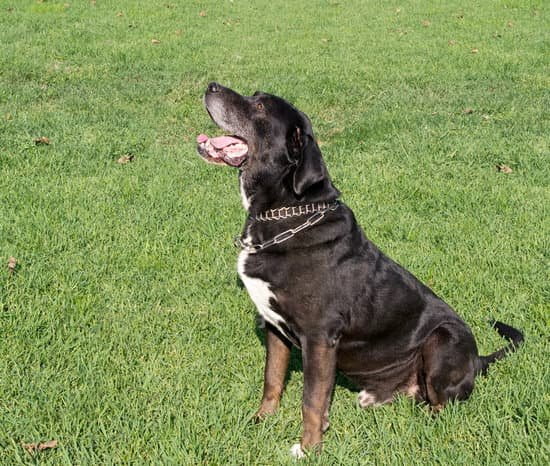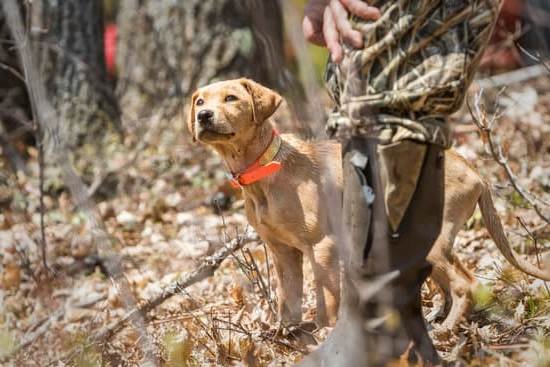House training a dog is a crucial aspect of pet ownership, and it starts with understanding the right age for training. The process of house training not only involves teaching your dog where to eliminate, but it also contributes to a harmonious relationship between you and your furry companion. A well-behaved and house trained dog brings about convenience and cleanliness in your home, making the experience of pet ownership more enjoyable.
As dogs go through various developmental stages in their lives, their ability to be house trained can be influenced by their age. Understanding these different stages is essential in determining the most suitable age to begin the house training process. Additionally, recognizing the signs of readiness for house training can significantly contribute to the success of this endeavor.
In this article, we will delve into the importance of house training for dogs and explore the benefits that come with having a house trained dog. We will also discuss the developmental stages of dogs and how age can impact their ability to be house trained.
Additionally, we will identify the signs that indicate a dog is ready to be house trained and provide tips on how to recognize these signs in your own pet. By understanding these key factors, you will be better equipped to navigate the process of house training your furry friend effectively.
Understanding the Developmental Stages of Dogs
A dog goes through several developmental stages in its life, each of which can impact its ability to be house trained. The first stage is the neonatal stage, which lasts from birth to two weeks of age. During this stage, puppies are entirely dependent on their mother and littermates for warmth, nourishment, and stimulation. They are unable to eliminate waste on their own and rely on their mother to lick them to encourage urination and defecation.
The second stage is the transitional period, which spans from 2-4 weeks of age. At this stage, puppies start to become more mobile and their senses begin to develop. They also start to form connections with humans and other animals around them. This is an important time for socialization and introducing the concept of house training.
Finally, the third stage is the socialization period, which starts at around 3 weeks of age and lasts until about 12-14 weeks old. This is a crucial time for a puppy’s mental development as they start learning social cues from other dogs and humans.
Understanding these developmental stages is essential when considering when to start house training a dog. Each stage presents different challenges and opportunities for training, so it’s important for dog owners to be aware of these stages in order to effectively train their pets.
| Developmental Stage | Age Range |
|---|---|
| Neonatal Period | Birth to 2 weeks |
| Transitional Period | 2-4 weeks |
| Socialization Period | Around 3 weeks to 12-14 weeks |
Signs of Readiness for House Training
Understanding Your Dog’s Behavior
Before beginning the house training process, it is essential to understand your dog’s behavior patterns and body language. Dogs typically exhibit certain signs when they need to relieve themselves, such as pacing, circling, sniffing the ground, or whining. As a responsible pet owner, it is crucial to pay close attention to these behaviors and take note of any consistent patterns that may indicate your dog’s readiness for house training.
Establishing a Routine
Creating a consistent routine for your dog can also aid in identifying their readiness for house training. Dogs thrive on routine and predictability, so establishing set times for feeding, playtime, and bathroom breaks can help them develop a natural rhythm for relieving themselves. By observing your dog’s behavior during these scheduled potty breaks, you can identify when they are most likely to need to go outside and eventually transition to successful house training.
Physical Signs of Maturity
In addition to behavioral cues, the physical maturity of your dog can also indicate their readiness for house training. Puppies have smaller bladders and less control over their bodily functions, so it may take longer for them to grasp the concept of house training compared to older dogs.
It is important to be patient and observant as your dog grows and develops, taking note of any improvements in their ability to hold their bladder and understand the concept of potty training.
The Best Age for House Training
When it comes to house training a dog, it is essential to consider the age at which you begin the process. The ideal age for starting house training can greatly impact the success and efficiency of the training. Understanding the developmental stages of dogs is crucial in determining the best age for house training.
1. Puppyhood: Puppies are like sponges, eager to learn and please their owners. However, they also have limited bladder control and may not understand that eliminating indoors is inappropriate. It is generally recommended to start house training when a puppy is around 12-16 weeks old, as by this stage, they have developed enough control over their bodily functions to begin learning appropriate elimination behavior.
2. Adolescent Stage: During this stage, which typically occurs between 6 months to 2 years of age, dogs may experience some regression in their house training due to hormonal changes or behavioral challenges. Consistency and patience are key during this phase, as dogs may test boundaries and require reinforcement of good habits.
3. Adult Dogs: If you have adopted an adult dog that has not been previously house trained, it is still possible to teach them appropriate elimination behavior. However, it may require more time and patience compared to training a younger dog.
It’s important to keep in mind that every dog is different, and some may be ready for house training at slightly different ages. Understanding your individual dog’s readiness and providing consistent guidance will ultimately lead to successful house training.
Common Challenges in House Training
House training a dog can be a rewarding but challenging process. One of the most common difficulties that dog owners encounter during the house training process is accidents inside the house. It is important to remember that accidents are a normal part of the learning process for dogs, especially puppies. Additionally, some dogs may struggle with separation anxiety, making it difficult for them to hold their bladder while their owners are away.
Another challenge in house training is when a dog fails to understand or respond to cues for going outside. This can lead to confusion and frustration for both the dog and the owner. In some cases, dogs may also exhibit territorial marking behaviors indoors, despite being seemingly house trained. These challenges can be discouraging, but with patience and persistence, they can be overcome.
It is also common for dogs to have setbacks in their house training progress. This could be due to changes in routine, new environments, or even health issues. Understanding that setbacks are normal and being prepared to address them with positivity and consistency is key to successfully navigating through these challenges.
| Common Challenges | Solutions |
|---|---|
| Accidents inside the house | Consistent supervision, frequent potty breaks, and positive reinforcement when the dog eliminates outside |
| Separation anxiety | Gradual desensitization to being alone, providing engaging toys or activities while alone, seeking professional help if needed |
| Failing to respond to cues for going outside | Reinforcing cues consistently through positive reinforcement techniques such as treats or praise when the dog eliminates outdoors |
Tips for Successful House Training
House training a dog can be a challenging but rewarding process. With the right tips and techniques, it is possible to effectively train your furry friend to be obedient and well-behaved in the home environment. The key to successful house training lies in consistency, patience, and positive reinforcement.
Establish a Routine
One of the most important tips for successful house training is to establish a consistent routine for your dog. Dogs thrive on routine and structure, so it’s essential to take them outside to do their business at the same times every day. By establishing a routine, you can help your dog understand when and where they are supposed to relieve themselves, making the house training process much smoother.
Use Positive Reinforcement
Positive reinforcement is an effective method for encouraging good behavior in dogs. When your dog successfully goes to the bathroom outside or exhibits other desired behaviors, such as ringing a bell when they need to go out, be sure to reward them with praise, treats, or affection. This positive reinforcement will reinforce the idea that going potty outside is the right thing to do.
Consider Crate Training
Crate training can be a helpful tool in the house training process. Crates provide dogs with a safe and secure space, and they can help prevent accidents inside the house when you are unable to supervise your dog. Be sure to choose an appropriately sized crate for your dog and introduce them gradually to this new environment. With proper crate training, your dog will learn bladder control and develop better bathroom habits.
By implementing these tips for successful house training, you can set your dog up for success and ensure that they become a well-behaved member of your household. Remember that every dog is unique, so it’s important to stay patient and consistent throughout the training process. With time and dedication, you can achieve successful house training results with your furry companion.
Consistency and Patience
When it comes to house training your dog, consistency and patience are key elements for achieving success. Dogs thrive on routine and structure, so it’s important to establish consistent training methods and schedules to help them understand what is expected of them. Furthermore, patience is essential as the house training process can take time and may involve setbacks along the way.
To effectively implement consistency and patience in your house training efforts, consider the following tips:
- Establish a regular feeding schedule: Feeding your dog at the same times each day can help regulate their bathroom habits, making it easier to predict when they will need to go outside.
- Use positive reinforcement: Rewarding your dog with praise, treats, or toys when they exhibit appropriate bathroom behavior can encourage them to continue this behavior in the future.
- Maintain a consistent potty spot: Designate a specific area outside for your dog to relieve themselves. Taking them to this spot consistently reinforces where they should go.
- Be patient with accidents: It’s natural for dogs to have accidents during the house training process. Instead of getting frustrated, remain patient and continue using positive reinforcement to encourage proper behavior.
By incorporating these strategies into your house training routine, you can create an environment that promotes consistency and patience, ultimately leading to a well-trained and obedient dog. Remember that every dog is unique, so it’s important to tailor your approach based on your pet’s individual needs and behaviors. With time, dedication, and understanding, you can successfully house train your furry companion.
Conclusion
In conclusion, house training a dog is an essential part of responsible pet ownership. By understanding the developmental stages of dogs and recognizing the signs of readiness for house training, dog owners can set their pets up for success. The best age for house training typically falls between 12-16 weeks, when puppies are more receptive to learning and establishing good habits. While there may be challenges along the way, consistency, patience, and positive reinforcement are key to overcoming them.
It is important for dog owners to remember that successful house training requires time, effort, and dedication. By following the tips and techniques provided in this article, such as crate training and establishing a routine, dog owners can effectively teach their pets proper bathroom habits. Additionally, maintaining consistency and patience throughout the process will greatly contribute to the success of house training.
In implementing these strategies and techniques with diligence, dog owners can enjoy the benefits of having a well-behaved and house trained companion. Ultimately, by investing in the time and effort needed for proper house training, both dogs and their owners can have a harmonious living environment that strengthens their bond.
Frequently Asked Questions
At What Age Should a Dog Be Fully House Trained?
The age at which a dog should be fully house trained can vary depending on the breed and individual dog. In general, most dogs can be fully house trained by the time they are 4 to 6 months old.
Some smaller breeds may take a little longer, while larger breeds may catch on more quickly. Consistency, positive reinforcement, and patience are key aspects of successful house training.
Can an 8 Week Old Puppy Be Potty Trained?
Yes, it is possible to start potty training an 8-week-old puppy. At this age, puppies are still developing their bladder control and may not be able to hold their urine for very long periods.
Frequent trips outside, praise for going in the right spot, and closely observing your puppy’s behavior for signs that they need to go can help with successful potty training at this young age.
How Do You Stop a Dog From Peeing and Pooping in the House?
To stop a dog from peeing and pooping in the house, it’s important to first rule out any medical issues that could be causing the behavior. After that, consistent supervision, regular bathroom breaks outside, positive reinforcement for going in the right spot, and proper cleaning of any accidents inside can help to curb this behavior.
It’s also important to avoid punishment or scolding, as this can lead to fear or anxiety around elimination for the dog.

Welcome to the blog! I am a professional dog trainer and have been working with dogs for many years. In this blog, I will be discussing various topics related to dog training, including tips, tricks, and advice. I hope you find this information helpful and informative. Thanks for reading!





